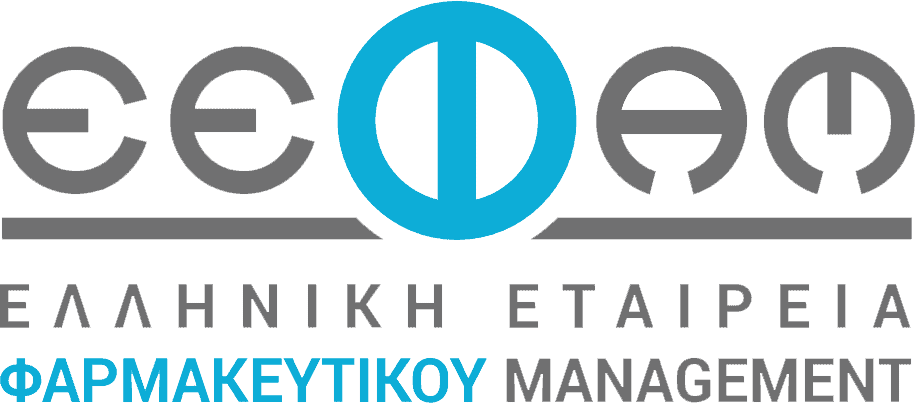Blog
Blog
Scaling national e-health: Best practices from around the world

Implementing new national e-health1 solutions is inherently complex, and the challenges extend well beyond the technology domain. Facilitating adoption and regular use of e-health solutions by patients and healthcare professionals (HCPs) can prove especially fraught, yet widespread adoption is an important component of realizing the full potential of these solutions.
- Patients frequently find their e-health experiences are not intuitive for many reasons, including poor app design and patients’ lack of understanding of medical terminology.
- Workflows for e-health applications such as electronic health records (EHRs) and e-prescriptions are based on clinical processes rather than a user’s perspective.
- Data privacy and IT security protections, while necessary and important, can frustrate users’ attempts to log in to apps.
- The practical value of e-health solutions may be unclear to patients (and HCPs).
- HCPs may find e-health solutions difficult to integrate with their existing systems.
Despite these challenges, e-health solutions have demonstrated their potential to improve care quality, cost, and patient and HCP experience.
Indeed, a McKinsey assessment shows that the potential value of fully utilizing 26 digital healthcare technologies in 14 countries is equal to 8 to 12 percent of total healthcare spending within each country.4 Of this estimated value, about 70 percent could be captured by hospitals and HCPs and 30 percent by health insurers.
This article shares strategic actions that successfully spurred adoption and regular use of e-health solutions in countries around the world and lays out how other countries could combine and implement these strategic actions in three phases: setup, scale-up, and enhancing benefits. The analysis conducted for this article and real-world examples illustrate how these strategic actions, along with a holistic change-management program, could be used to scale e-health solutions in other countries and health systems.
Global e-health’s considerable potential
Digitalizing healthcare systems and implementing e-health solutions at the national level could make information more readily accessible and improve data sharing. Furthermore, using analytics-based e-healthcare solutions could improve treatments, avoid unnecessary interventions, and reduce medical and prescription errors. For example, clinicians could use their time during initial appointments more efficiently and avoid follow-up appointments with ready access to patient information. Easier intrahospital communications and reduced admissions enabled by remote monitoring could further boost efficiencies. And telemedicine, which facilitates timely treatment even for patients in remote and rural areas, could help close gaps in healthcare provisioning if combined with affordable, high-speed internet access.5
Governments and public institutions have been investing in e-health solutions for decades, prompted by the potential of these technologies. The United States launched one of the first EHR projects in the early 1970s,6 and in an early form of telemedicine, Norway relied on videoconferences for long-distance outpatient medical consultations and treatment in 1996.7 Since then, e-health solutions have been deployed around the world, with investments increasing markedly during the COVID-19 pandemic. In 2017, the size of the global e-health market8—including investments in e-health apps, devices, online pharmacies, and online consultations—was estimated at $19 billion; by 2022, it had grown to $64 billion.9 The market is projected to achieve a CAGR of 11.31 percent and reach $109 billion by 2027.10
According to McKinsey analysis, some investments in national e-health solutions are not yielding the desired adoption rates. In Germany, for example, less than 1.5 percent of patient records have been captured digitally since the country implemented its EHR system in 2021.11 Further impeding adoption, of the 30 to 40 percent of HCPs that have installed EHR applications, only 2 to 3 percent use them.12
Although elegant user design can contribute to widespread adoption, our analysis of national e-health systems13 reveals that certain strategic actions to introduce technologies and encourage solution use are more likely to facilitate adoption and successful implementation.
Scaling solution adoption: Best practices in action
Countries around the globe have used various combinations of strategic actions to achieve widespread adoption and use of their national e-health solutions. There are numerous adoption-boosting actions that—when applied at the right time and in the right sequence—have yielded favorable results in the countries reviewed as part of this analysis; national e-health solutions take certain strategic actions most frequently (exhibit).

These strategic actions for scaling e-health adoption can be grouped into three deployment phases: setup, scale-up, and enhancing benefits. The phases can be viewed as a continuous transition with a shifting focus rather than as a linear process in which phases are completed consecutively or in a specific order.
The analysis for this article shows that a systematic approach—implementing the right actions at the right time—helps navigate the phases of scaling adoption and usage. Establishing overarching change and communication plans at the outset is an important contributor to adoption. Once a plan is in place, a potentially effective set of strategic actions could be selected and tailored to the e-health solution and the specific needs of the targeted users.
Setup phase: Attracting users
The primary objective of the setup phase is to attract a critical mass of patients and HCPs to new e-health solutions. Supporting strategic actions demonstrate to users how a new e-health solution addresses a specific problem, and they clearly state the solution’s benefits. Additionally, regulatory measures could be explored along with other actions to lower barriers to entry, such as establishing trust in e-health solutions and streamlining registration to simplify solution onboarding for patients and HCPs. Furthermore, compelling incentives such as financial compensation or reimbursements can be evaluated to determine their potential for encouraging proper usage.
These questions could help leaders focus efforts during the setup phase:
- What is the best use case to begin with, for patients and HCPs?
- Could regulatory measures be evaluated to ascertain their potential impact on achieving adoption?
- What actions could help cultivate trust?
- How can solutions be integrated smoothly with existing IT systems while ensuring interoperability?
Compelling use cases. Compelling use cases convey how a new e-health solution addresses an unmet need for patients or HCPs and show that the solution is easy to use and adds real value in practice. Simple dimensions to assess the potential of new e-health use cases are the number of users (patients and HCPs) affected, transaction volumes, and the potential impact of the e-health solution per transaction.
During the COVID-19 pandemic, some use cases demonstrated effective ways to attract new and lapsed users to e-health solutions and help scale those solutions. The benefits of the COVID-19-related solutions were clearly communicated, and the solutions were easy to use and encouraged frequent use (for example, to show proof of vaccination or COVID-19 test results multiple times daily). Consequently, the solutions attracted many users.
Use of Austria’s e-health system rose during the COVID-19 pandemic. The country introduced an electronic vaccination record in 2020 as a new feature of ELGA, its national electronic patient record system. In addition, free COVID-19 antigen tests in drugstores were available only via ELGA’s e-medication function. These strategic actions helped to further strengthen the system’s value proposition and encouraged the reactivation of a sizable number of ELGA user accounts.14
Management of adoption, use, privacy, and security. Some measures may help encourage proper adoption of e-health solutions on a national level. McKinsey research indicates that both clearly defined consent management policies and measures that mandate high data privacy and cybersecurity standards could potentially cultivate user trust in e-health solutions (a prerequisite for scaling new use cases). Other measures that could help facilitate adoption could also be explored, such as requiring adoption by HCPs or requiring users to actively opt out of digital systems versus actively sign up for them. However, such measures can also have unintended consequences, especially if they lack good design. Further, ensuring compliance with a complex web of regulations requires investment in legal, security, and compliance functions, which can make entering the market challenging for small health systems and innovators.
In Denmark, patient health data is automatically integrated in the national health portal, sundhed.dk. The government system, which contains each resident’s health status, medical history, prescriptions, and other relevant health information, is now mandatory for all HCPs in the country, and patients may not opt out of it. Notably, the system is highly transparent about how patients’ data is used, and strict rules and regulations limit access to and use of the EHR system to authorized HCPs for legitimate medical purposes.15 Patients can also access an activity log for their EHR that displays all data requests from HCPs.16 In addition to other levers, the combination of regulatory measures and other strategic actions increased the number of frequent users of sundhed.dk to about 45 percent of the Danish population by around 2010.17
Denmark also offered incentives for HCPs, gradually building HCP adoption of e-health solutions. For example, physicians received €1,500 per year to spend on e-health and were reimbursed more quickly if they were connected to the national healthcare infrastructure. Eventually Denmark mandated that EHRs integrate with the national e-health infrastructure. Once that legal requirement was established, 100 percent of HCPs adopted the national system.18
Interoperability and integration. A lack of integration and interoperability of IT systems can be one of the biggest barriers to scaling new e-health solutions. The IT systems for different stakeholders (general practitioners, hospitals, national databases, and so on) are generally heterogeneous—not connected or standardized in terms of their data or interfaces. Designing e-health solutions and supporting technical capabilities to make integrating them with existing IT systems as simple as possible fosters adoption among HCPs. Terminology services are one example of technical capabilities to ensure data interoperability. These services act as intermediaries, effectively mapping different coding and exchange standards to enable seamless communication. Financial incentives to reduce the burden for HCPs and offset initial investment costs can also be considered.
Iceland partnered with the vendors that created Saga, the country’s e-healthcare system, to automate the integration of that system with individual HCPs’ existing IT systems.19 This integration allowed HCPs to access the patient information in Saga directly from their own systems, eliminating the need to switch between different applications or manually enter data. Today, the EHR is used by more than 90 percent of HCPs in Iceland.20
Scale-up phase: Fostering frequent usage
Once a critical mass of users has been reached, strategic actions in the scale-up phase center on encouraging users to become active, frequent users of e-health solutions. The quality of customers’ early experience with e-health solutions often determines whether they make using them a habit. Use rates can also be increased by effectively integrating different solutions—boosting usage across all solutions—as well as by further optimizing user experience, which enhances the value proposition of the solution.
These questions could help leaders focus efforts during the scale-up phase:
- What is the best approach to making the e-health solution part of users’ daily routines?
- Is the solution design user-centric?
- Which use cases can boost regular usage?
Solution integration. The integration of different e-health solutions provides the dual benefits of improving user experiences and boosting the usage rates for all connected solutions. Patients prefer a simple, consistent e-health experience with uninterrupted user journeys. 21Thus, making it easier and more convenient to transition from one solution to another increases the likelihood that users will engage with all solutions more often. When facilitated by use of a central identity, central access, and consent management solutions, integrated e-health solutions help create this holistic patient experience.
Singpass, Singapore’s national management system for verifying citizens’ identities, is an important enabler for integrating various e-health solutions. Singpass is subject to regular, rigorous review and was introduced as part of a much larger identity verification initiative—Singapore’s mandated use of facial recognition—and privacy framework.22 Singpass allows users to easily share data between apps, and (with users’ consent) apps can obtain information from Singpass to verify users’ identity.23 During the COVID-19 pandemic, citizens were required to submit health declarations online. Singpass enabled the integration of data from these declarations with other systems, such as immigration records and COVID-19 testing results. This helped authorities in Singapore identify potential cases of COVID-19 and greatly aided contact tracing.24 Singpass was also used to incorporate vaccination records from various sources—including hospitals, clinics, and vaccination centers—into a centralized system, allowing citizens to access their vaccination records online and authorities to track vaccination coverage.
User centricity. Across industries, digitalization has proved to be most beneficial when it is highly focused on end users.25 When new e-health solutions are designed and developed with insufficient focus on user centricity, poor user experience and limited value in practice often result. This drives down use rates for e-health solutions and impedes scaling. End users of e-health solutions represent a range of populations, including patients, medical professionals, and pharmacies. Patient-focused solutions involve patient journeys and integrating those different journeys wherever possible.
Solutions focused on HCPs, on the other hand, emphasize easy incorporation into daily processes and seamless integration into IT systems. Involving a broad range of stakeholders in the development process for e-health solutions can be invaluable in helping facilitate user centricity across stakeholders. Involvement can vary widely, including conducting research to understand preferences of different user groups; bringing together user group stakeholders to generate ideas, codesign solutions, and provide feedback on prototypes; and conducting user testing that evaluates the usability, feasibility, and acceptability of e-health solutions.
Via the Kanta Services platform, Finnish citizens can access their health data and prescriptions, HCPs can access EHRs and write prescriptions, and pharmacies can access a comprehensive pharmaceutical database, among other capabilities. The platform’s development involved patients, healthcare professionals, and IT experts, and it focused on making the platform user-friendly, secure, and practical for daily use. Consequently, Finland was able to streamline physicians’ workflow and ease their administrative burden by integrating access to services into a single platform.26 Prior to Kanta Services, patients could not access their own records, and it was not uncommon for physicians to have difficulty accessing patient records from other units; physicians would need to log in and out of multiple systems throughout the day to access records as well as perform daily tasks such as viewing medical images and ordering laboratory tests.27
High-volume use cases. Digital healthcare applications with high transaction volumes, such as e-prescriptions, could help to further drive adoption at scale of other solutions. Integrating these high-transaction-volume solutions with other e-health solutions fosters greater engagement and increased use across solutions.
Since the introduction of e-prescriptions in Estonia and the integration of prescription data into the country’s EHR system in 2010, the country has seen a substantial increase in the use of both solutions. Today, nearly 100 percent of prescriptions issued in Estonia are digital, and 99 percent of all healthcare data has been captured in the EHR system. Patients can access a full overview of their medications and a data log for each prescription via the patient portal. Additionally, a drug interaction alert service checks e-prescription data for medical interactions and displays notifications to HCPs to alert them to any potential concerns. Today, all Estonian physicians use the drug alert service as part of their daily routines.28
Enhancing benefits: Encouraging further usage and enabling ecosystem growth
Once a critical mass of users is frequently using e-health solutions or an entire ecosystem of solutions, a variety of innovative strategic actions can help maximize the benefits of the digital ecosystem. Developing new partnerships with HCPs and organizations, for example, may expand the range of services that are available via the e-health solution and add value for users. By consistently delivering value-adding offerings, the e-health ecosystem could deepen user engagement and foster loyalty, increasing adoption and use of the solution and ultimately leading to the realization of greater overall value.
These questions could help leaders focus efforts during the enhancing-benefits phase:
- How can e-health adoption lead to valuable innovations and insights?
- What is the key to creating a thriving e-health ecosystem and using data effectively?
- How can the full potential of e-health solutions be unlocked?
Data-driven innovations. A central national e-health infrastructure, especially a national data hub, may improve data standards as well as quality, availability, and accessibility of data. These improvements could, in turn, create opportunities for data-driven, value-adding analytics solutions from third parties.
Israel’s national database, the National Health Information Exchange (NHIE), contains health data from various sources—such as hospitals, clinics, and health insurers—and is managed by the Israeli Ministry of Health (IMH). While the NHIE is not publicly available, approved researchers, start-ups, and organizations can access and share the data at no cost with permission from the IMH. To ensure the privacy and security of the data, access to the NHIE is tightly regulated, and users must adhere to strict guidelines and regulations.29 One start-up that has leveraged Israel’s NHIE uses AI-powered medical-scan readers to detect early signs of cancer. The software is designed to analyze medical images such as computerized tomography (CT) scans and X-rays and identify potential anomalies that could indicate the presence of cancer or other diseases. By accessing Israel’s population health data, the solution can train its algorithms on a large and diverse data set, improving the accuracy and reliability of its scans.
A rich ecosystem. Opening a national e-health infrastructure to third parties helped to scale adoption and add value in some of the countries included in the analysis conducted for this article. Indeed, third-party solutions could help accelerate innovation and access to additional value pools. Implementing robust protections for personal health information and ensuring respect for patients’ rights before opening e-health infrastructure to third parties can foster trust in the system.
As discussed above, Israel’s NHIE allows health organizations as well as start-ups to not only access available health data but also easily connect to the e-health infrastructure using uniform interoperability standards. This standardization helps promote competition and innovation by lowering barriers to entry for companies new to the market. An open API–based platform allows third-party developers to build services that can easily connect to it. Collaboration and innovation are also enabled by this openness, which makes the platform’s data and services available for the development of new solutions. The data-sharing agreements Israel has established govern the secure and controlled sharing of its health data, allowing that data to be used to improve health outcomes while safeguarding patient privacy. A broader ecosystem was thus created via an open digital infrastructure that facilitated competition among healthcare players.30
Population health management and informed decisions and policy making. Digitalized healthcare data could be used for central analytics such as population health management. This data could aid understanding of the overall health and care needs of a population as well as the availability of healthcare within a system, possibly improving care coordination and resource allocation.
Chicago’s Smart Data Project showcases how predictive analytics can support effective public health initiatives. The Chicago Department of Public Health employs predictive models that identify households at high risk for lead poisoning and monitor food establishments to detect safety violations. Using publicly available data, these models enable proactive interventions to help protect public health.31
A tailored approach to encouraging adoption at scale: Fundamental steps
The adoption of e-health solutions cannot be approached with a one-size-fits-all mindset. It is important to recognize that the diverse nature of healthcare systems, technological infrastructures, cultural contexts, and regulatory environments necessitates tailored approaches for each setting. What may work seamlessly in one country may encounter considerable challenges or inefficiencies in another.
The strategic actions provided in this article are instructive, offering insights into successful approaches to achieving e-health solution adoption at scale. They should not be regarded as rigid templates but rather flexible blueprints that can be customized and optimized to a country’s specific circumstances. These actions can serve as guideposts as leaders engage in three potential preliminary steps to develop a customized approach to scaling e-health solutions: defining baselines, developing a target design, and creating a detailed action plan.
Defining baselines
When successfully implemented, tailored e-health solutions typically begin with a clear understanding of a country or region’s baseline for three critical factors: the digital affinity of user groups, the requirements of local healthcare systems, and the digital maturity of infrastructure.
Assessing user groups’ digital affinity entails understanding their familiarity and comfort with technology. This helps identify potential barriers that may affect adoption and enables targeted interventions to increase acceptance. Local healthcare system requirements could be evaluated by analyzing existing structures, policies, and processes to ensure solutions align with the context and integrate effectively. And analyzing technical capabilities, interoperability, and data standards of existing infrastructure provides insight into its digital maturity. This assessment can determine the feasibility of deploying solutions and identify necessary upgrades for successful implementation and scalability.
Developing a target design
Thoughtful analysis of solutions that would be most beneficial as well as consideration of target user groups and stakeholders can facilitate an effective target design for an adoption strategy. This process involves strategic design choices, including determining the optimal sequencing of solution rollout and ensuring seamless interconnection and interoperability among different offerings. The target design provides a comprehensive vision for structuring solutions and their interactions within the broader e-health ecosystem.
Creating a detailed action plan
Achieving scalability in e-health solutions necessitates an action plan that extends beyond individual solutions and encompasses the entire ecosystem of e-health offerings. Identifying the strategic actions that yield the greatest impact for each specific solution, as well as those that influence the overall offering, is central to effectively scaling adoption. This understanding can inform the appropriate timing and sequencing of actions, which support optimal implementation and adoption. Above all, change management is an integral component of any action plan because it plays a pivotal role in bolstering acceptance and adoption among stakeholders from the outset.
An action plan in action.The Qatar Ministry of Public Health developed a comprehensive action plan to establish its e-health ecosystem.32 The ecosystem’s foundation is a central platform that provides a national health information exchange and a repository that facilitates the secure exchange and storage of health information. The platform will enable communication between public and private healthcare players, including hospitals, health centers, clinics, and pharmacies, and will support patient empowerment.
As part of the program, the ministry will launch multiple solutions, including a health information viewer for clinicians, a national e-prescription system, national disease registries and management, traditional AI capabilities, and a patient-centric mobile app.
The ministry started implementing a strategy built on adoption propelled by target segments and change management strategy; this strategy comprised multiple steps to help ensure adoption and wide use across all national solutions, including the following:
- implementing a user-centric design approach involving a wide group of end users (clinicians, patients, and technology experts)
- implementing an easy-to-use patient consent system integrated with the patient application and the health information viewer
- ensuring solution capabilities to streamline adoption, including embedding solutions into clinical workflows
- planning multiple training initiatives—for example, training programs tailored to solutions and healthcare systems
- implementing a communication plan that regularly engages all stakeholders
As the analysis conducted for this article demonstrates, customization, adaptability, and localized approaches in scaling e-health solutions are of utmost importance. Indeed, embracing this mindset and leveraging the wealth of proven strategic actions available can accelerate the adoption of e-health solutions. And, more broadly, tailoring solutions and strategies to meet patients and HCPs where they are advances e-health’s immense potential to enhance healthcare delivery and improve patient outcomes on a global scale.
ABOUT THE AUTHOR(S)
Ali Ustun is a partner in McKinsey’s Doha office, where Osman Ozturk is an associate partner; Florian Niedermann is a senior partner in the Stuttgart office; Matthias Redlich is a partner in the Frankfurt office, where Katharina Sickmüller is an associate partner; Panco Georgiev is a senior partner in the Dubai office, and Andreas Faber is an associate partner in the Cologne office.








